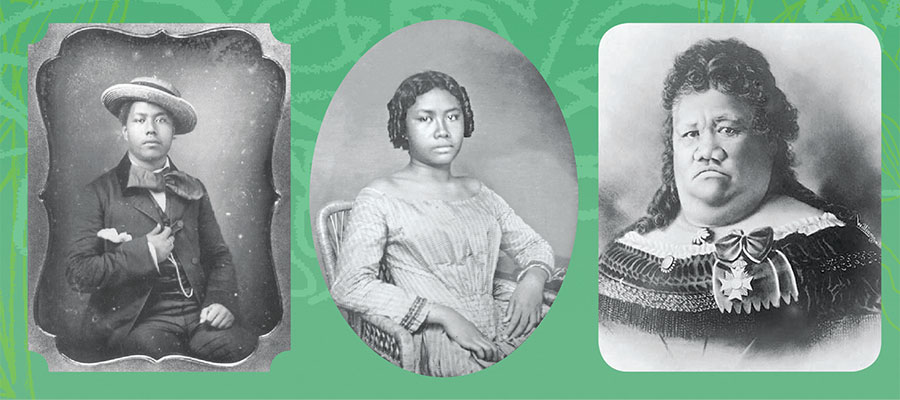
From kings to farmers, from ancient history into present day, hānai has been not just a way for childless couples to raise children, but also for family borders to shift and undulate, encompassing more than the modern nuclear family. Historically, hānai was also used for political purposes, linking ruling families. Perhaps the most famous example was King Kalākaua, given in hānai to High Chiefess Haʻaheo Kaniu. Lili‘uokalani, Hawai‘i’s last monarch, was the hānai child of chiefs higher ranking than her biological parents. In her autobiography, Hawaii’s Story by Hawaii’s Queen, she wrote that hānai “seems perfectly natural to us. . . . this alliance by adoption cemented the ties of friendship between the chiefs. It spread to the common people, and it has doubtless fostered a community of interest and harmony.”
As a strategy, hānai had an advantage over alliances forged through marriage: While it’s not uncommon to have conflict with parents-in-law (another enduring tradition), people are less likely to wage war against their own parents, either biological or adoptive.
Hānai was considered binding, and for life. In the ancient tradition, when the baby was handed over, the biological parents would say, “Nau ke keiki, kūkae a na‘au. (“Yours is the child, excreta, intestines and all.”)
Hānai children were loved and doted upon no differently than biological children. When Ka‘ahumanu, favorite queen consort of Kamehameha I, died in 1832, she bequeathed her substantial landholdings to her hānai daughter Ruth Ke‘elikōlani, who, largely based on this inheritance, became the wealthiest woman in the Islands, owning almost 9 percent of the total lands of Hawai‘i.
There are countless modern examples of hānai, from key figures in Hawaiian society (such as famed linguist Kaliko Beamer-Trapp, hānai son of “Auntie Nona” Beamer, champion of traditional Hawaiian culture) to everyday people with huge hearts and huge hānai families to match. The late Haroldleen and Sam Kaleleiki, for example, had at one point around twenty-five biological, hānai, and temporarily visiting children in their home — so many that they took numbers to shower. When Sam passed away in 2015, his obituary illustrated the bonds of hānai, stating he was survived by daughters with two different maiden names and sons with three different family names. One of those sons, Kalehua Bellotto, has traced four generations of blood and nonblood relatives moving in and out of their house.
As an adult, Kalehua fostered three children. Decades later, they are still close. “I raised them in the tradition of hānai. They know I love them, and my Hawaiian family recognizes them as family, too.”
In his article “Hawaiian Family System of Hana, Maui, 1957,” published in the Journal of the Polynesian Society, John Forster reports on a study of seventy-three households in that rural East Maui community. Seventeen of them contained a total of thirty-one hānai children, three adopted under U.S. law, and eight who were ho‘okama, a variant of hānai in which children past babyhood, and even adults, are made part of the family. The term ho‘okama, practically lost today, was used into the early missionary era to describe these relationships, sometimes instigated at the child’s request, sometimes at the parents’, and sometimes just as a natural evolution of affection.





